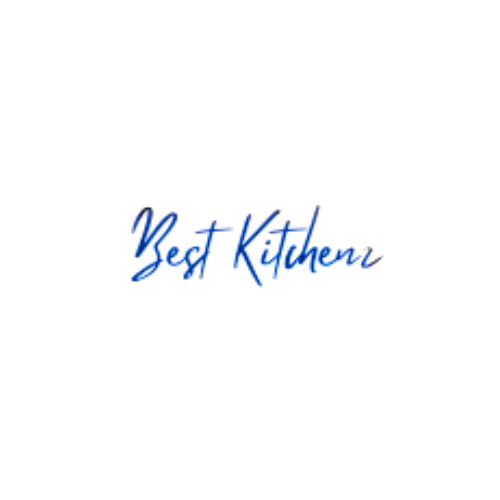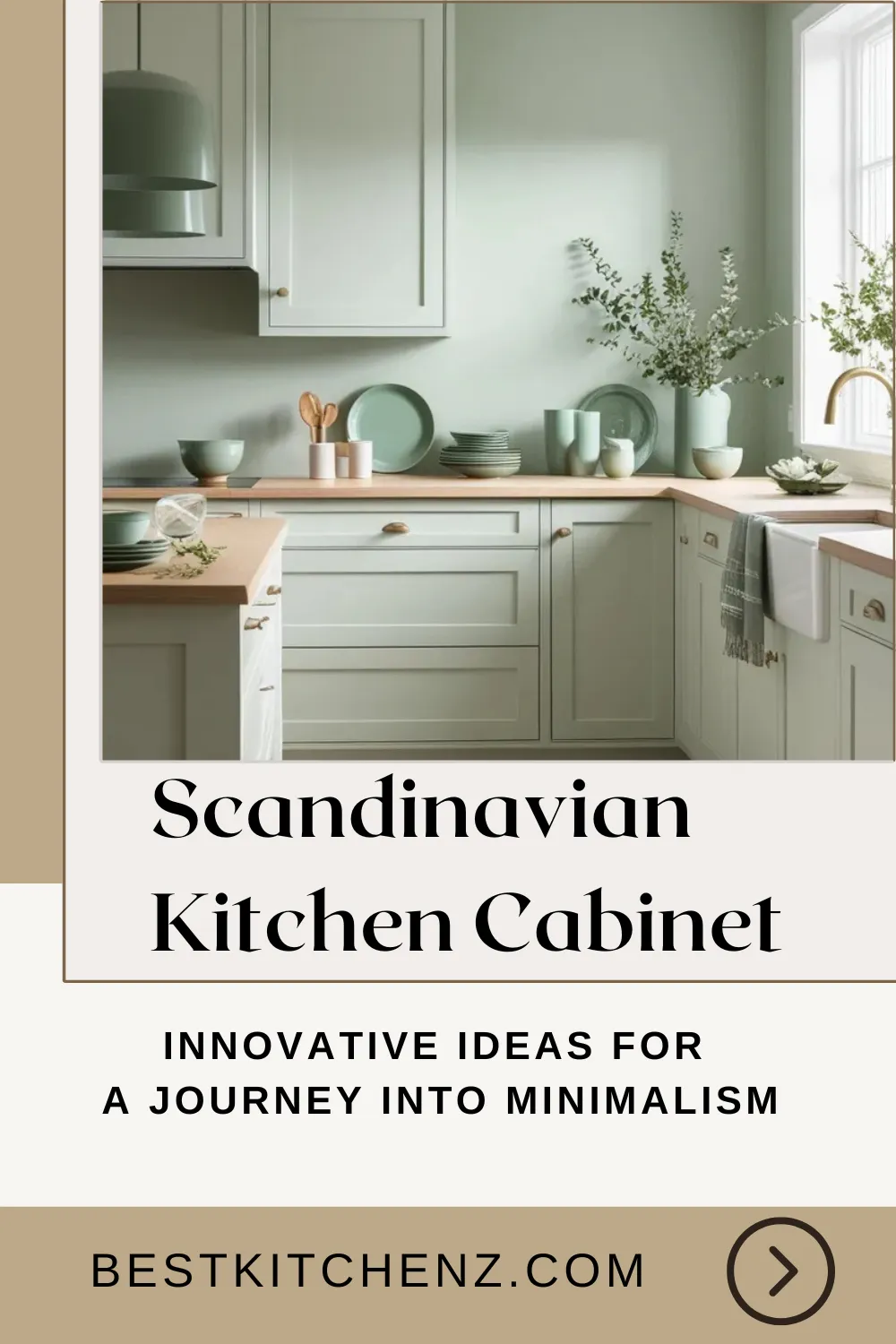As I embarked on the journey of designing my kitchen, I found myself drawn to the elegance and simplicity of Scandinavian design. This style embodies a minimalist aesthetic that prioritizes functionality and natural beauty.
In this article, I’ll share my insights on Scandinavian kitchen cabinets, exploring their key features, popular colors, innovative ideas, and specific styles that can transform any kitchen into a serene and stylish space.
In This Article
- 1 Key Features of Scandinavian Kitchen Cabinets
- 2 Popular Colors for Scandinavian Kitchen Cabinets
- 3 Innovative Ideas for Scandinavian Kitchen Cabinets
- 4 Green Scandinavian Kitchen Cabinets in Nature-Inspired Colors
- 5 Creating a Mood Board: White Cabinets in Scandinavian Kitchens
- 6 The Timeless Appeal of Shaker Style Cabinets
- 7 The Beauty of White Oak Cabinets in Scandinavian Design
- 8 Defining Your Style: Kitchen Cabinets in Scandinavian Aesthetics
- 9 Bold Choices: Incorporating Black Kitchen Cabinets
- 10 The Classic Look of White Scandinavian Kitchen Cabinets
- 11 Maple Cabinets: A Warm Addition to Scandinavian Kitchens
- 12 Sage Green: A Trendy Choice for Scandinavian Kitchens
- 13 FAQs on Scandinavian Kitchen Cabinet Ideas
- 13.1 What are the main characteristics of Scandinavian kitchen cabinets?
- 13.2 How do Scandinavian kitchen cabinets differ from other styles?
- 13.3 Can Scandinavian kitchen cabinets be used in small spaces?
- 13.4 Are Scandinavian kitchen cabinets eco-friendly?
- 13.5 How can I incorporate modern appliances into a Scandinavian kitchen?
- 13.6 What color schemes work best for these kitchens?
- 13.7 How do I maintain a minimalist look in my kitchen?
- 14 Conclusion
One of the first things I noticed about Scandinavian kitchen cabinets is their emphasis on minimalism. The clean lines and simple designs create an uncluttered look that instantly makes the kitchen feel more spacious. I opted for flat panel cabinets, which have smooth surfaces without any decorative details or hardware.
This choice not only aligns with the Scandinavian aesthetic but also helps maintain a modern and organized environment.Natural materials play a crucial role in this design style.
I chose warm wood tones for my cabinets, which add a cozy feel to the space. The combination of these wood tones with neutral colors creates a welcoming atmosphere that balances the cooler shades often found in Scandinavian kitchens.
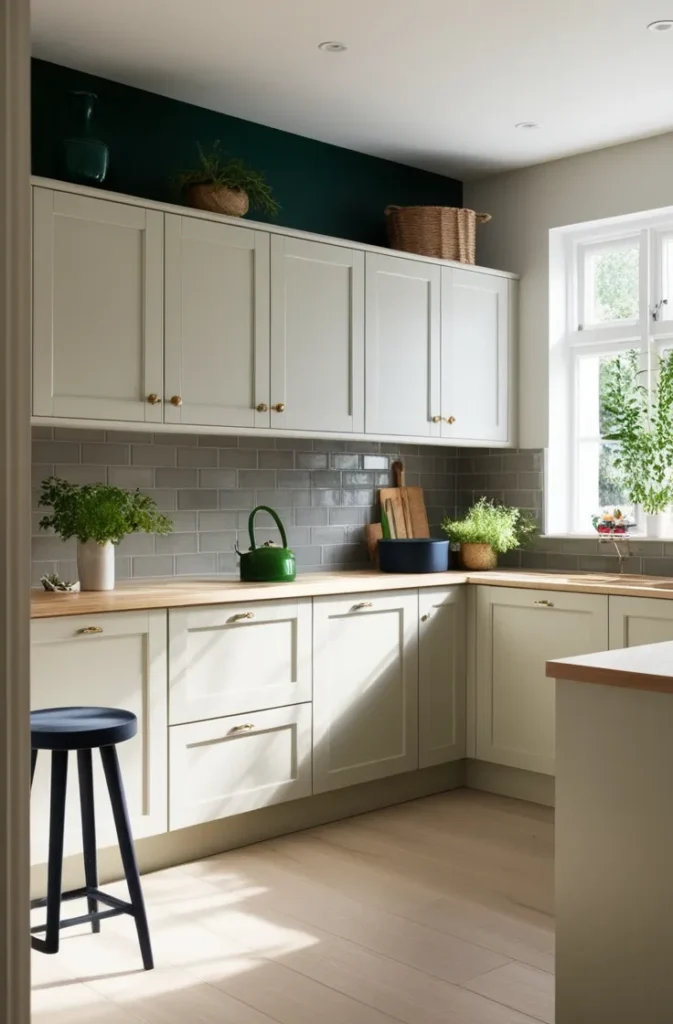
When it comes to color, I discovered that Scandinavian kitchens often feature a neutral palette dominated by whites, grays, and beiges. These colors reflect light beautifully, making the space feel airy and open.
For my kitchen, I decided on soft white cabinets that complement the natural light streaming through my windows.
Check Next: 10 Scandinavian Kitchen Island Ideas: Merging Minimalism with Practicality
However, I also wanted to add a touch of personality. I learned that incorporating bold accent colors can create striking focal points. For instance, deep greens or navy blues can add sophistication without overwhelming the space.
This blend of classic neutrals with bold accents allowed me to express my style while staying true to the Scandinavian ethos.
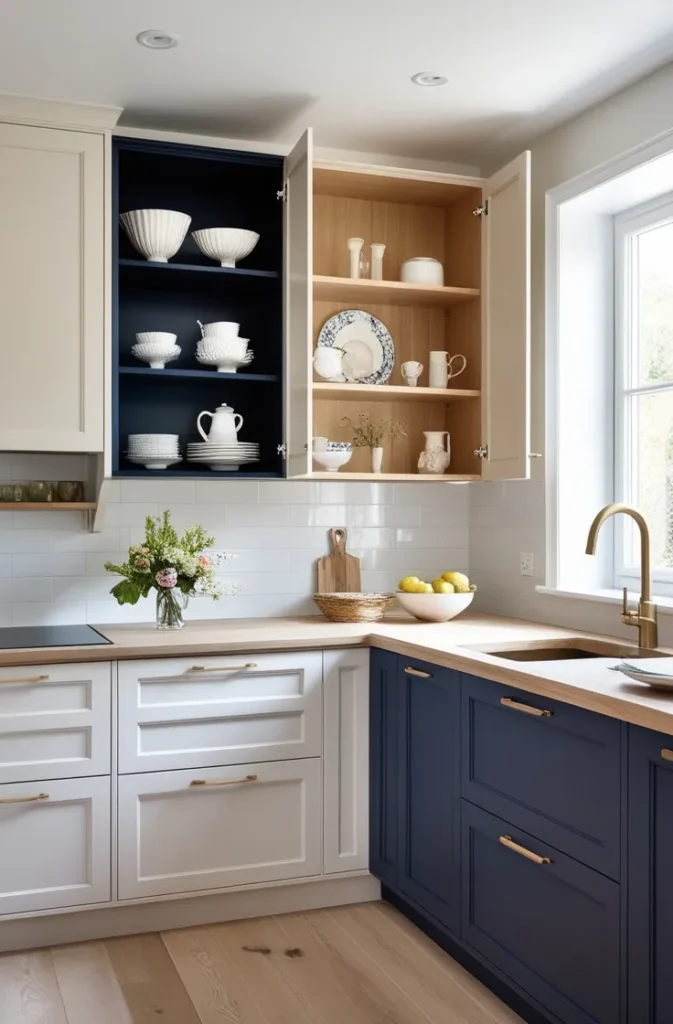
As I explored design options, I came across several innovative ideas that enhanced both functionality and aesthetics in my kitchen. One idea that resonated with me was the use of open shelving alongside traditional cabinetry.
This not only provides easy access to frequently used items but also allows me to display beautiful dishware and decorative pieces.I also considered two-tone cabinetry as a way to create visual interest.
By pairing my white upper cabinets with darker lower ones, I achieved a modern look that adds depth to the space. This technique allowed me to maintain a cohesive design while showcasing my personality.
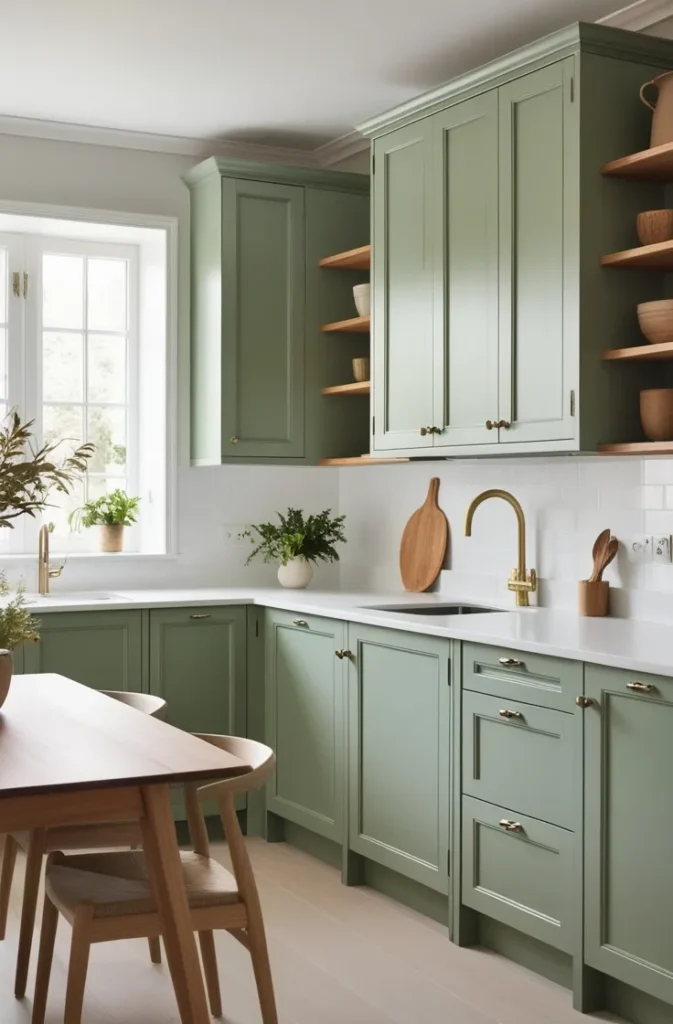
In my quest for inspiration, I discovered the growing trend of using green tones in Scandinavian kitchens. Sage green cabinets caught my eye as they evoke a sense of nature and tranquility.
This color pairs beautifully with warm wood accents and white countertops, creating a balanced and inviting atmosphere.I decided to incorporate sage green elements into my kitchen design through accessories and small cabinetry accents.
This subtle touch added warmth and life to the overall aesthetic without overpowering the minimalist approach.
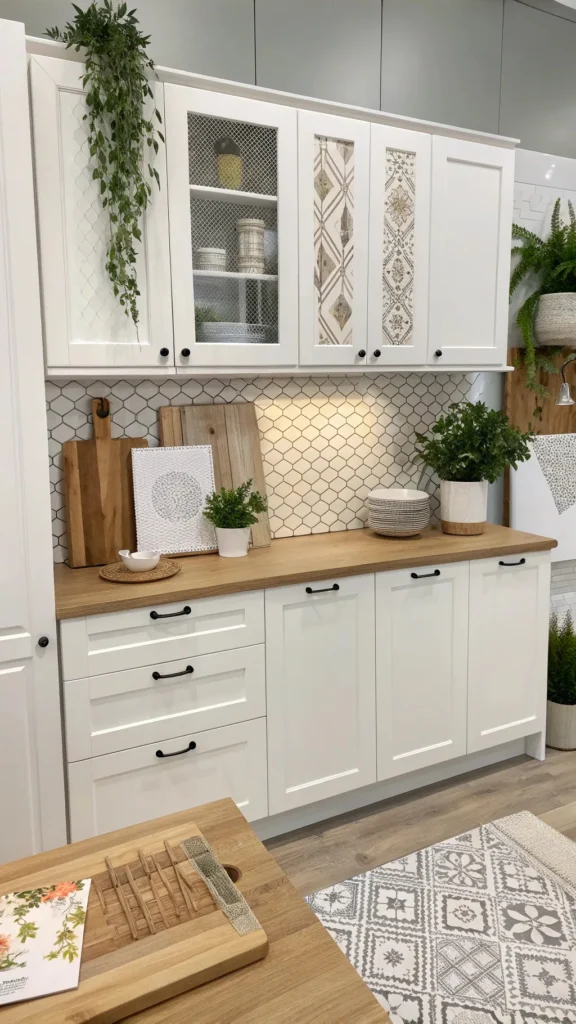
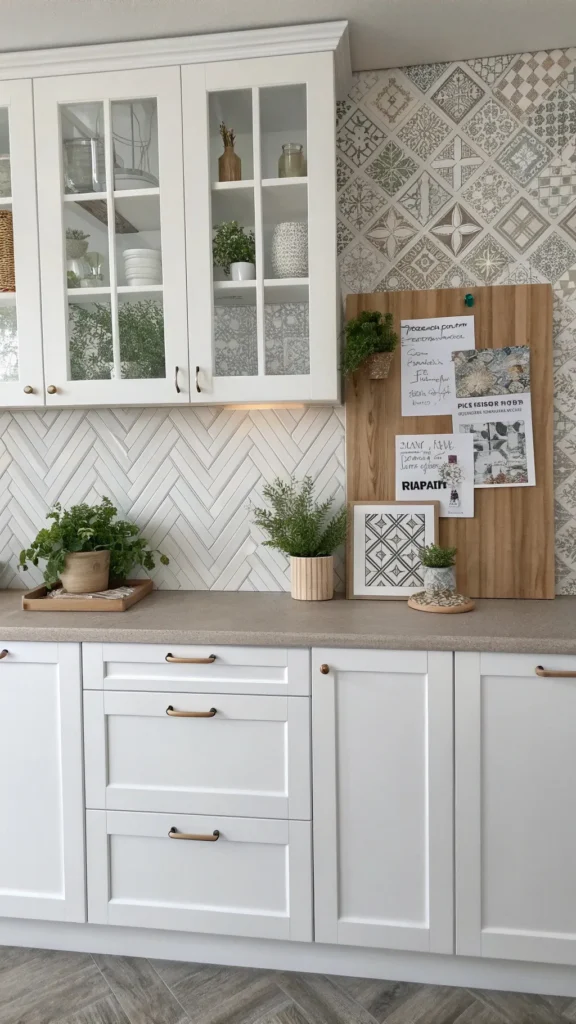
To visualize my design ideas, I created a mood board featuring white cabinets as the focal point. On this board, I included images of textured elements like wooden countertops and patterned backsplashes.
Adding plants brought life to the mood board while maintaining the clean aesthetic characteristic of Scandinavian design.This exercise helped me clarify my vision and ensure that all elements would work harmoniously together in my final design.
The Timeless Appeal of Shaker Style Cabinets
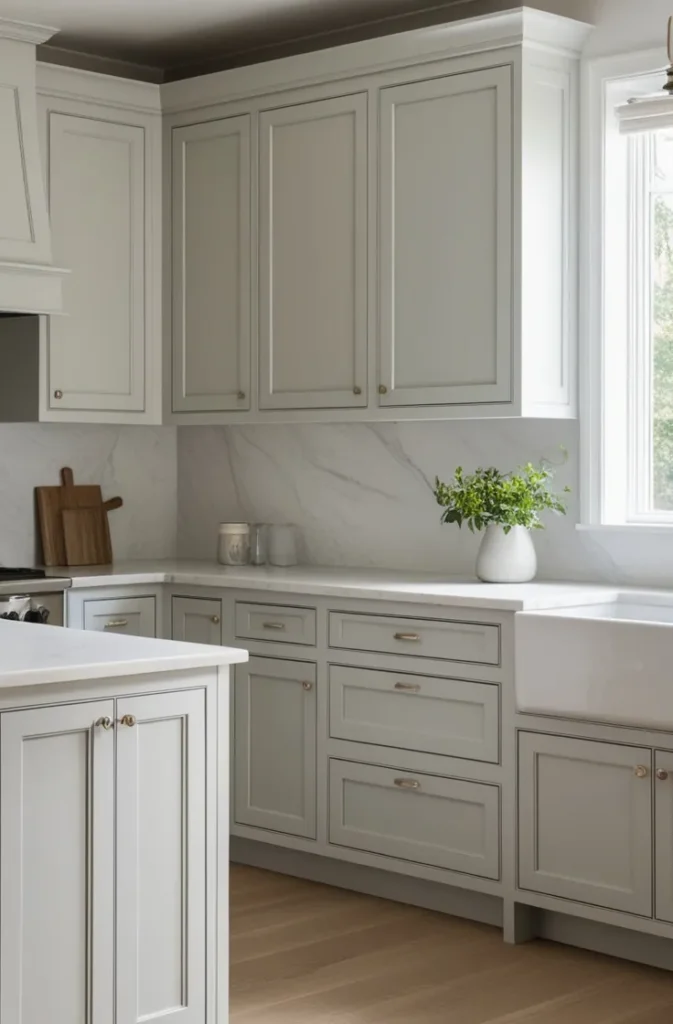
Shaker cabinets quickly became one of my favorite styles due to their timeless appeal and versatility. Their simple yet elegant design features flat-panel doors with minimal detailing, making them perfect for achieving a Scandinavian look.
I opted for shaker-style cabinets in a soft gray finish for my kitchen. This choice not only complements the overall color scheme but also adds an element of sophistication without being overly ornate.
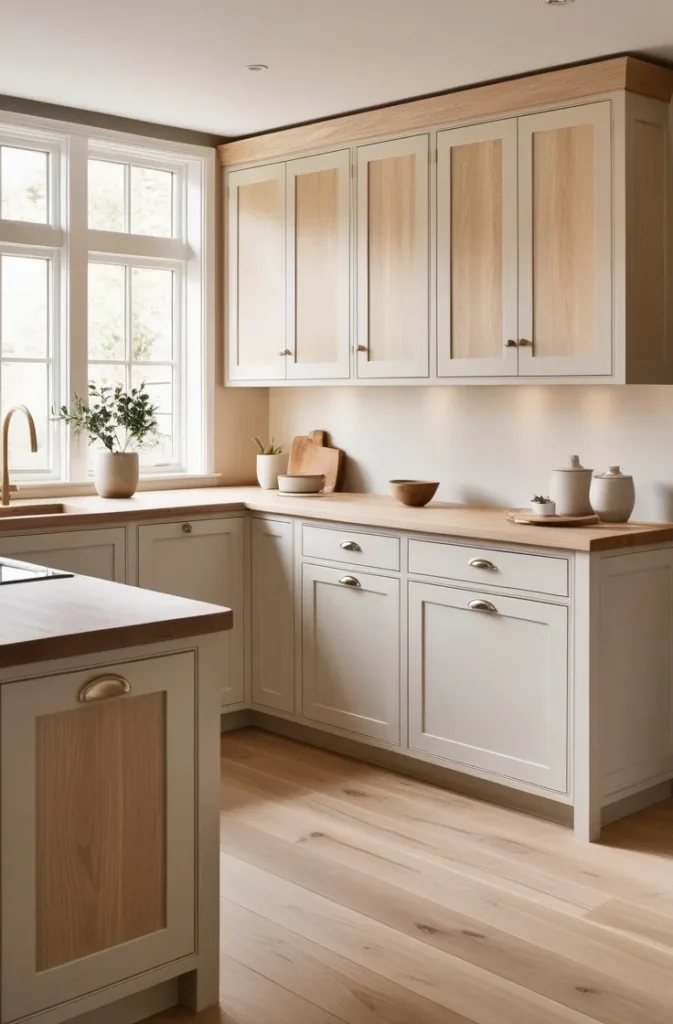
White oak is another material I considered for its durability and warm tones. The light hues of white oak create an inviting atmosphere while reflecting natural light beautifully.
For countertops, I chose white oak as it pairs wonderfully with my white cabinetry and adds texture to the space.This combination enhanced the overall aesthetic while ensuring practicality—an essential aspect of Scandinavian design.
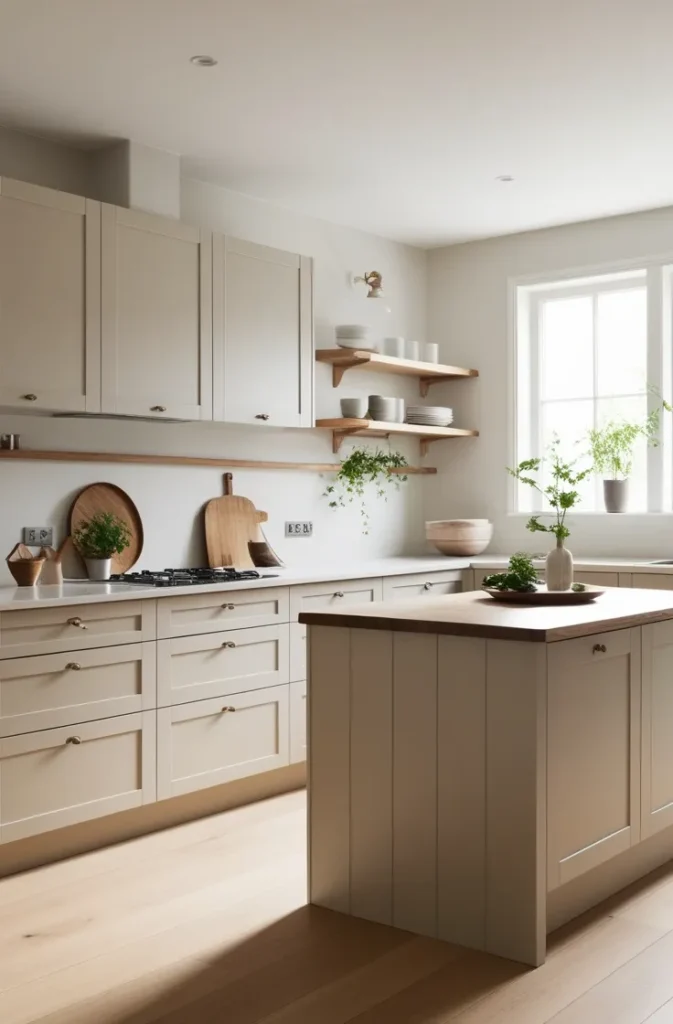
Choosing cabinets that reflect personal style within the Scandinavian theme was important to me. I learned that opting for flat-panel cabinetry enhances clean lines typical of this design philosophy.
I incorporated natural materials such as wood into my cabinetry choices to create warmth while maintaining an uncluttered appearance.
This balance allowed me to express my individuality while adhering to the minimalist principles of Scandinavian design.
Bold Choices: Incorporating Black Kitchen Cabinets
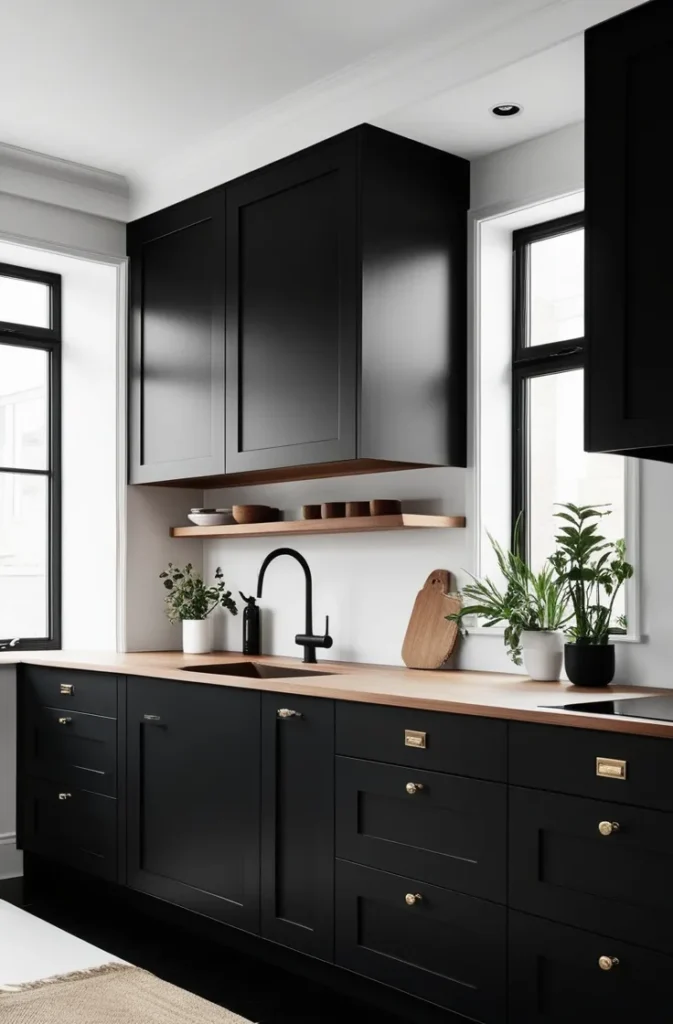
While lighter colors dominate many Scandinavian kitchens, I was intrigued by how black cabinets could provide a bold contrast that adds depth and sophistication.
Pairing black cabinetry with lighter elements such as white walls or wooden accents creates a striking balance that embodies modern elegance.Although I ultimately chose lighter colors for my kitchen, this idea inspired me to consider how contrasting elements could enhance future designs.

White cabinets are synonymous with Scandinavian design due to their ability to reflect light and create an open feel. They can be combined with various textures—such as matte finishes or glossy surfaces—to add interest without overwhelming the minimalist approach.
In my kitchen, all-white cabinetry complemented by natural wood elements created a fresh yet inviting atmosphere—a hallmark of Scandinavian style.
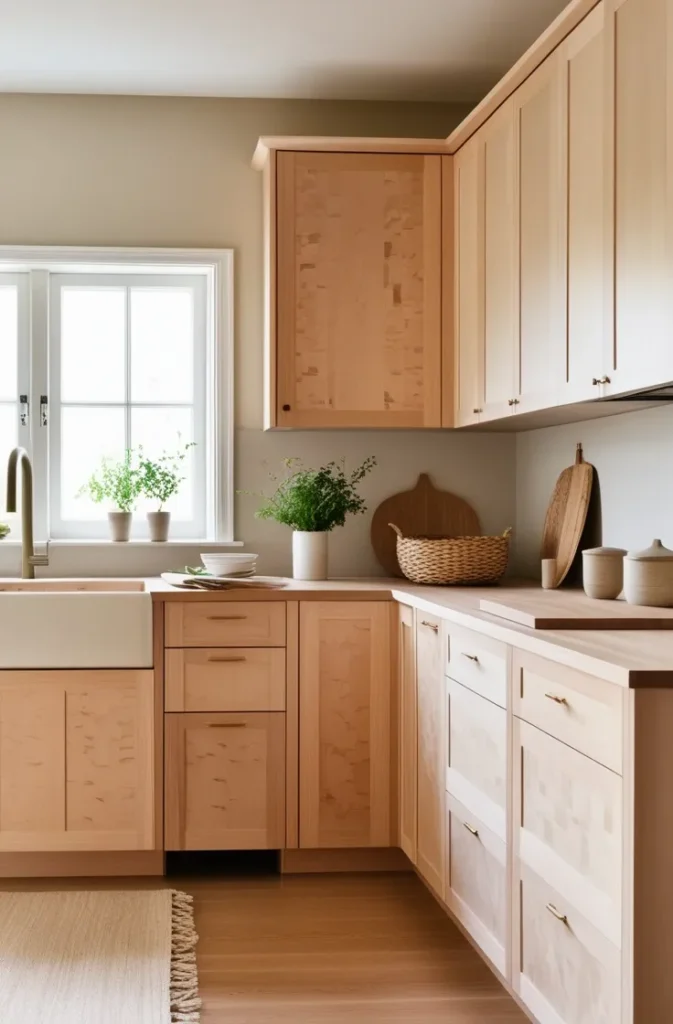
Maple is another excellent choice for Scandinavian kitchen cabinets due to its strength and beautiful grain patterns. Light maple cabinetry can enhance the airy feel of the space while providing durability. This material pairs well with neutral colors and natural textures, making it versatile for various design styles.
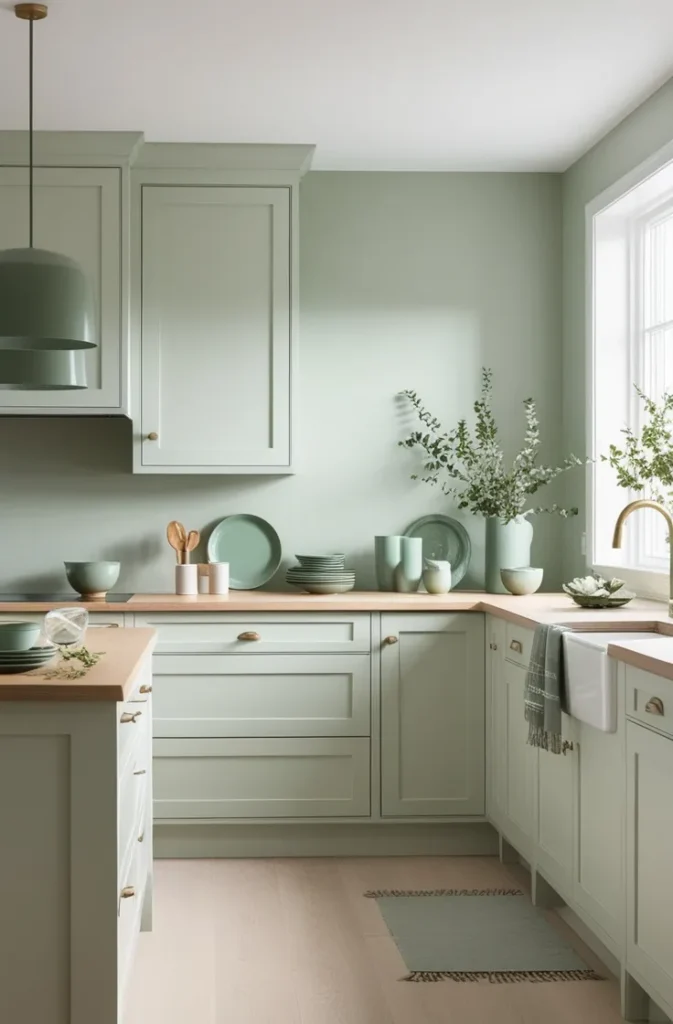
Sage green emerged as one of my favorite trends during this journey. Its calming hue brings nature indoors while maintaining the minimalist aesthetic characteristic of Scandinavian kitchens.
In my own design, incorporating sage green through decor elements allowed me to embrace this trend without committing fully to colored cabinetry.
Scandinavian kitchen cabinets are known for their minimalist designs, use of natural materials like wood, clean lines, muted color palettes, and functional layouts prioritizing organization.
Scandinavian kitchen cabinets emphasize simplicity and practicality over decoration; they focus on storage organization rather than elaborate designs or embellishments.
Absolutely! Their minimalist design and functional layout make them an excellent choice for both large and small kitchens alike.
Many Scandinavian kitchen cabinets use sustainable materials like wood veneer sourced from responsibly managed forests, making them an eco-friendly option.
Integrated appliances can be seamlessly built into cabinetry for a clean look; this helps maintain an uncluttered aesthetic typical of Scandinavian kitchens.
What color schemes work best for these kitchens?
Light neutrals such as whites, grays are popular choices; adding bold accent colors like deep greens or navy can create striking focal points without overwhelming the space.
How do I maintain a minimalist look in my kitchen?
Focus on decluttering surfaces by utilizing smart storage solutions within cabinetry; keep decor simple while choosing functional items that enhance rather than detract from overall aesthetics.
Conclusion
Embracing Scandinavian kitchen cabinets has transformed not only my cooking space but also how I view design overall. By focusing on natural materials, clean lines, and thoughtful details, I’ve created an inviting environment that reflects both functionality and personal style—a true embodiment of Nordic living.
